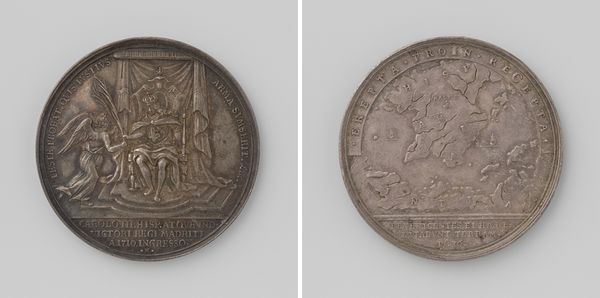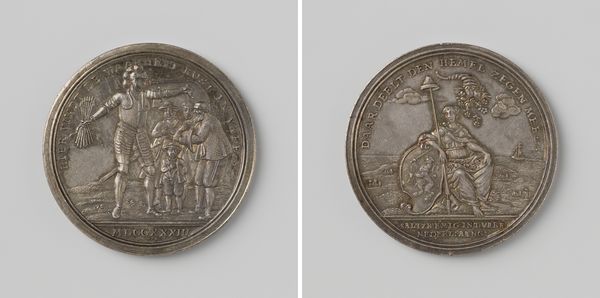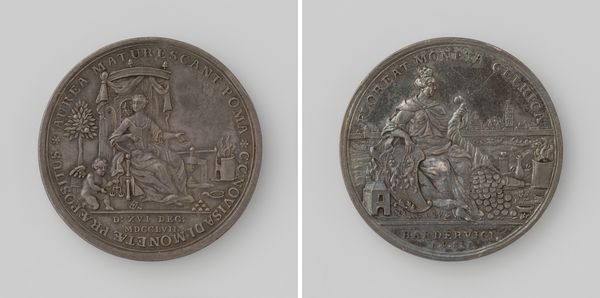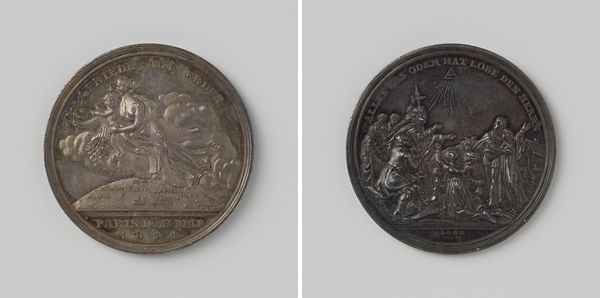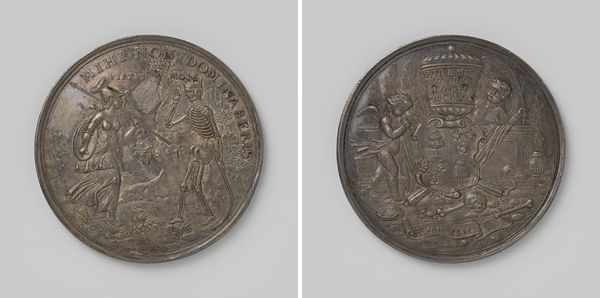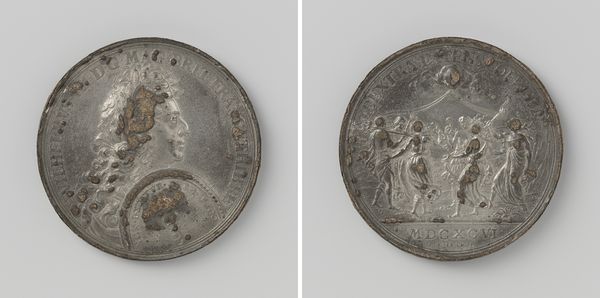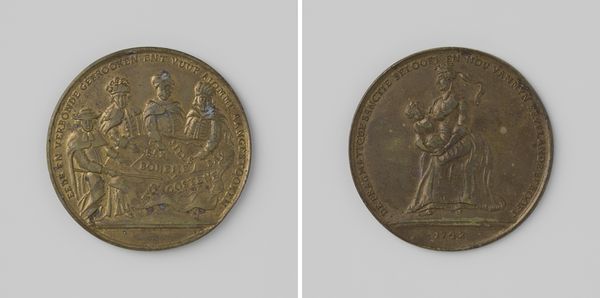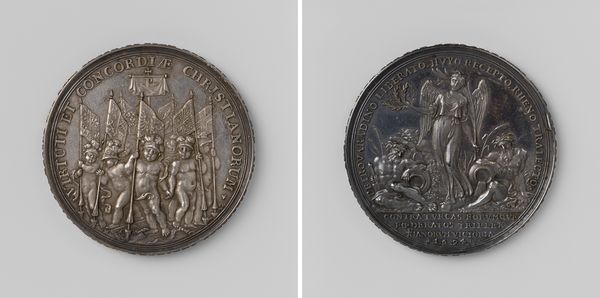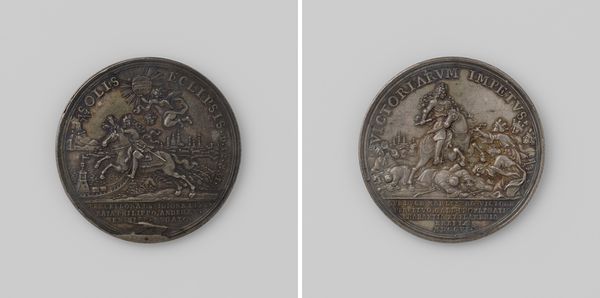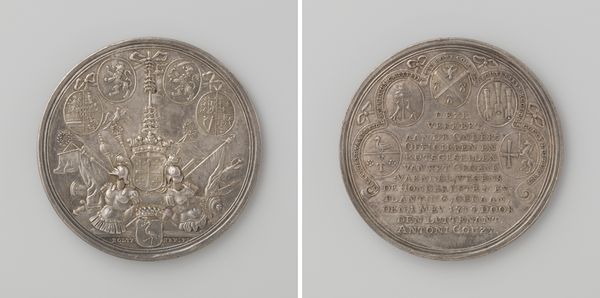
Inval van de Fransen in het Rijngebied en verbreking van het twintigjarige bestand van Regensburg 1688
0:00
0:00
metal, relief, engraving
#
medal
#
baroque
#
metal
#
relief
#
history-painting
#
engraving
Dimensions: diameter 4.5 cm, weight 39.60 gr
Copyright: Rijks Museum: Open Domain
Curator: Here we have a medal by Georg Hautsch, created in 1688, titled "Inval van de Fransen in het Rijngebied en verbreking van het twintigjarige bestand van Regensburg". Editor: It immediately strikes me as rather chaotic. The figures seem caught mid-flight, almost theatrical in their gestures, despite the weighty subject matter suggested by its creation in metal. Curator: Indeed. Hautsch, working in the Baroque style, utilizes this dynamism deliberately. The medium itself, an engraved metal relief, lends itself well to capturing such intricate detail within a small, portable object. The scene depicts the French invasion of the Rhine region and the breaking of the twenty-year truce of Regensburg. Editor: Ah, so it’s a historical document rendered in allegorical form. I see two distinct sides. One appears to show conflict, the actual invasion perhaps? The other side has these regal, draped figures… they’re certainly posed quite rigidly, giving the scene a structured feel that strongly contrasts with the anarchy on the other face of this piece. Curator: Precisely. The medal juxtaposes representations of war with that of potential alliances; observe the text, it describes the hope that "help comes through loyal concord," but it underscores an essential element: socio-political disruption and its profound consequences. Consider how such objects, with their duality of representation and their allusions to events of great consequence, once were used to create dialogue about history in daily lives. Editor: The material here almost becomes part of the message. The cold, hard metal reinforces the sense of a firm political stance. I suppose medals of this kind were less about pure aesthetics and more about solidifying viewpoints? Curator: Yes, medals served as pronouncements, carrying significance far beyond the artistry applied. What we observe about Georg Hautsch’s particular piece through formal observation—its busy composition, strong contrast, classical references and duality of scene—allows us to understand further its historical purpose and the intent of this historical object. Editor: The complexity, rendered in such meticulous detail, makes one truly ponder the weight of history it holds. It definitely gives pause to reconsider our assumptions about the era it speaks to and those who used such commemorative artwork in political communications.
Comments
No comments
Be the first to comment and join the conversation on the ultimate creative platform.
